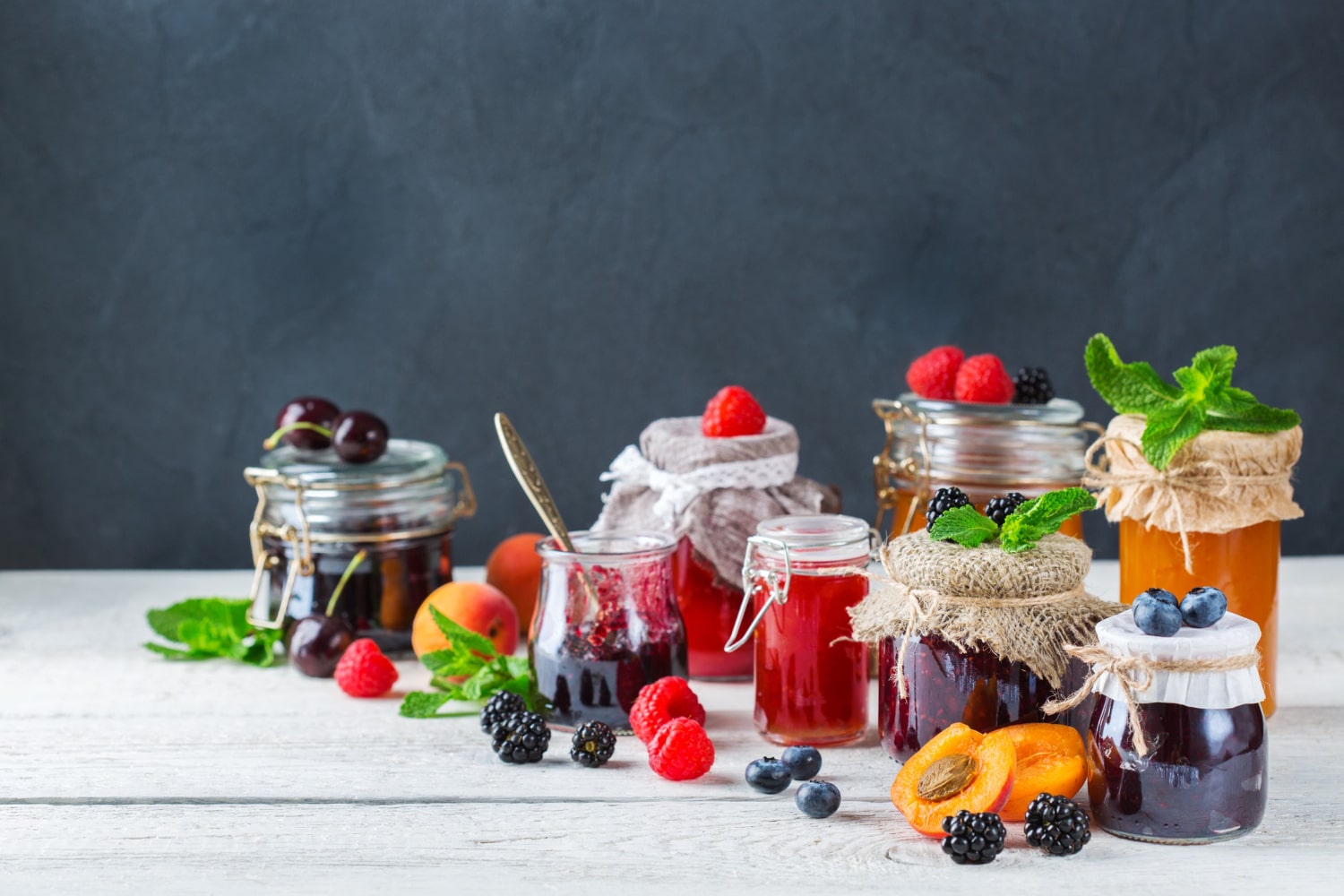Jam is not just a sweet addition to toast or pancakes. It has deep historical roots, a variety of preparation methods, and countless flavor options. In many countries, jam is not only a food product but also a part of cultural heritage. These interesting facts about jam, which you might not know, will offer a fresh perspective on this familiar and beloved treat.
- The first mentions of jam date back to Ancient Greece. Honey was mixed with crushed fruits and used as a delicacy or medicinal remedy. This mixture was considered a luxury item available only to the elite.
- In medieval Europe, jam was primarily prepared in royal courts. Due to the scarcity of sugar, it was an expensive and rare product, seen as a symbol of wealth and privilege.
- The French word “confiture” has become a common synonym for jam in many languages. It refers to the preservation of fruits in sugar, which reflects the main purpose of making jam — long-term storage.
- The most common method of preparing jam is boiling fruits with sugar until it thickens. However, there are also no-cook versions in which the ingredients are blended and thickened with natural gelling agents.
- Jam differs from preserves in its smooth, jelly-like consistency. Preserves usually contain visible pieces of fruit, while jam is more homogeneous and soft.
- Pectin is a natural gelling agent found in fruits that helps achieve the desired texture. Apples, lemons, and black currants are especially high in pectin.
- In the food industry, additional pectin is often added to speed up the gelling process. This allows for shorter cooking times and helps preserve more vitamins in the final product.
- In some countries, there is a clear distinction between jam, jelly, and marmalade. For example, in the United Kingdom, marmalade refers specifically to preserves made from citrus fruits, usually oranges.
- Jams have a long shelf life due to their high sugar content. Sugar acts as a natural preservative, preventing the growth of microorganisms.
- In Finland, cloudberry jam is considered a national delicacy. It is often served with cheese, meat dishes, and desserts.
- In Japan, jams made from unusual ingredients such as cherry blossoms or green tea are popular. These flavors reflect local culinary traditions and seasonal preferences.
- Jam can be made not only from fruits but also from vegetables. Tomato, pumpkin, or beetroot jam has an interesting texture and a slightly savory flavor.
- In some regions, jam is made from flowers such as rose, lilac, or lavender. These varieties have delicate aromas and are commonly used in pastries and desserts.
- The sugar syrup in jam not only adds sweetness but also stabilizes the texture. It helps maintain uniformity and prevents crystallization.
- In home canning, proper sterilization of jars is essential. Without it, even the most delicious jam can spoil quickly.
- There are also diet jams in which sugar is replaced with stevia or other natural sweeteners. These options are lower in calories but usually have a shorter shelf life.
- The most expensive jam in the world is made from rare white cherries grown in a single valley in Turkey. A jar can cost several hundred dollars.
- Jam is widely used in cooking not only as a spread but also as a filling for cakes, croissants, cookies, and rolls. Its texture pairs well with dough and creams.
- Many countries host festivals dedicated to jam and preserves. These events include not only sales but also contests for best flavor or most creative recipe.
- In Christian tradition, jam has sometimes symbolized the sweetness of spiritual life. It was included in festive dishes or brought as a gift during religious celebrations.
- Some countries have legal standards regulating the minimum fruit content in jam. In the European Union, jam must contain at least 35 percent fruit mass.
- In culinary museums, one can find samples of jam that are over 100 years old. These have become historical artifacts illustrating the food habits of different eras.
- Jam is often associated with coziness, home comfort, and family breakfasts. This is why it continues to be loved by people across different cultures and generations.
These fascinating and surprising facts about jam show how rich and diverse the story of even the simplest product can be. From ancient recipes to modern culinary innovations, jam remains a favorite treat for both gourmets and tradition lovers. Its preparation combines culture, science, and creativity in every spoonful. Jam is not just a sweet food but a living part of humanity’s culinary heritage.





